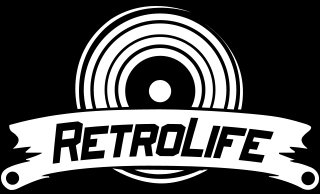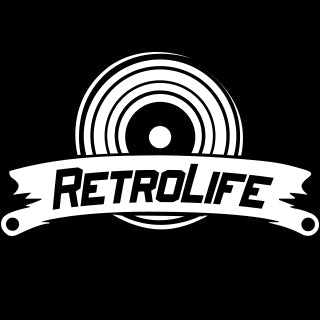If you're in the mood for some good music, you might flip through the neatly shelved rows of album covers, make your selection, and slide the shiny, round disc out of its sleeve. Holding it by the edges, you carefully slip it into place, anticipating the rich sounds you will soon hear. But it's not the sound of a CD playing your favorite music -- it's a record.
As the disc begins to spin on a turntable, an arm drops to the outer edge of black vinyl record. After a brief pause, you are greeted by tunes that sound rich, but not perfect, and sometimes the needle skips across a groove, interrupting a song.
Before the 1970s -- before the invention of tapes, compact discs and MP3 players -- people listened to recorded music on record players. There was no fast forward, rewind or shuffle. Instead, you chose an album and enjoyed about 25 minutes of music by one artist before flipping it over for more or putting another record on the turntable.
From the time the phonograph was invented in 1877 until it was slowly phased out and replaced by other music media nearly 100 years later, the technology used to play recorded sounds changed only slightly. And today, records and record players are even enjoying a comeback.
In this article, we'll look back to see how Thomas Edison's favorite invention works and how it has influenced on culture and society. Up first, we'll see how the idea of recording sound came to be, and whether Edison was actually the first person to discover it.
Edison's Discovery
The genesis of the record player can be traced back to Thomas Edison's groundbreaking invention in 1877: the phonograph. Edison's contrivance was the first to successfully record and reproduce sound, a feat that would revolutionize auditory experiences. This ingenious device used a tinfoil-covered cylinder and a stylus to etch sound waves into the foil as the cylinder rotated. The resulting grooves could then be traced by the stylus to reproduce the sound, thereby immortalizing auditory moments. Edison's phonograph laid the foundation for all subsequent advancements in sound recording and playback technology.
Evolution of the Record Player
Following Edison's initial success, the phonograph underwent significant transformations. The late 19th and early 20th centuries saw the advent of the gramophone, which introduced flat discs instead of cylinders. Emile Berliner, the inventor of the gramophone, recognized the potential for mass production with flat discs, leading to the proliferation of 78 RPM records. Over the decades, materials and designs evolved, with shellac records giving way to vinyl in the mid-20th century. Vinyl offered greater durability and fidelity, cementing its place as the standard for recorded music. The introduction of the 33⅓ RPM LP and the 45 RPM single further diversified listening options, enhancing the versatility and appeal of record players.
How a Vinyl Record is Made
The fabrication of a vinyl record is a meticulous process, beginning with the master recording. This original audio is etched onto a lacquer-coated disc using a precision cutting lathe. The lacquer master is then electroplated to create a metal stamper, which inversely represents the grooves of the record. This stamper is used to press vinyl pellets into discs under high pressure and temperature, imprinting the grooves onto the vinyl. The pressed discs are then cooled, trimmed, and inspected for quality. This process ensures that each record accurately reproduces the original audio, maintaining high fidelity and consistency.
How Records Are Played
Playing a vinyl record involves a delicate interplay of mechanical and electrical components. The turntable spins the record at a constant speed, usually 33⅓ or 45 RPM. The stylus, or needle, made of diamond or sapphire, traces the grooves on the record. These grooves contain the audio information, encoded as variations in their shape and depth. As the stylus moves through the grooves, it vibrates, generating electrical signals. These signals are amplified and converted into sound by the speakers, reproducing the recorded music with remarkable clarity and warmth. The precision of this process ensures a rich auditory experience, often described as more authentic and immersive than digital formats.
How Records Influenced Culture
Vinyl records have exerted a profound influence on culture, shaping music consumption and the industry at large. In the mid-20th century, records became the primary medium for distributing music, facilitating the rise of iconic artists and genres. Album artwork and liner notes transformed records into multifaceted art forms, offering visual and textual narratives alongside the music. Records also fostered a sense of community among listeners, who gathered to share and appreciate music collectively. The physicality of records and their playback rituals contributed to a deeper engagement with music, embedding them into the cultural fabric of society.
Record Resurgence
In recent years, vinyl records have experienced an unexpected resurgence, driven by a confluence of nostalgia and a desire for authenticity. Modern listeners are drawn to the tangible nature of vinyl, the ritualistic act of playing records, and the analog warmth that digital formats often lack. This revival is not merely a passing trend but a testament to the enduring appeal of vinyl. Independent artists and major labels alike are releasing new music on vinyl, and record stores have seen a renaissance. This resurgence underscores the timelessness of vinyl records, bridging the past and present, and reaffirming their place in the modern musical landscape.
In conclusion, the journey of the record player, from Edison's phonograph to today's vinyl resurgence, reflects a continuous evolution driven by technological innovation and cultural significance. The enduring appeal of vinyl records lies in their unique ability to offer a rich, immersive auditory experience, coupled with the nostalgia and authenticity that resonate with listeners across generations.


